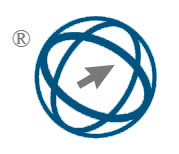Motor Imagery Detection in ECG Signals Using Wavelet Packet Decomposition and Multiscale Convolutional Neural Networks
Abstract
Detecting motor imagery from electrocardiographic (ECG) signals is complex but crucial in developing advanced neuroprosthetic devices and brain-computer interface (BCI) systems. In most cases, linear models applied using conventional methods are not appropriate for the time-varying and non-linear nature represented by the ECG characteristics, resulting in weak performances. This research addresses this problem, combining Wavelet Packet Decomposition and Multi-Scale Convolutional Neural Networks to improve the feature extraction mechanism and classification accuracy. ECG data is pre-processed from the PhysioNet EEG Motor Movement/Imagery Dataset to remove noise and standardize signals. WPD is thus applied to decompose the signals into detailed frequency components to be input as features in the proposed Multi-Scale CNN. Different kernel sizes are implemented in these parallel convolutional layers to learn complicated features at various hierarchical resolutions. The proposed architecture is evaluated using performance parameters such as accuracy 92%, precision 89%, recall 93%, F1 score 91%, and ROCAUC 95%. These results showed that the model outperformed the earlier-used traditional methods, such as Support Vector Machines (SVM) and Random Forests, better-detecting motor imagery. This research emphasizes the integrative power of advanced signal processing techniques with deep learning in analyzing biomedical signals, providing a powerful solution to advancing neuroprosthetic and BCI technologies.
Full Text:
PDFReferences
P. Bach, C. Frank, and W. Kunde, "Why motor imagery is not motoric: towards a re-conceptualization in terms of effect-based action control," Psychological Research, Dec. 2022, doi: https://doi.org/10.1007/s00426-022-01773-w.
A. Saibene, M. Caglioni, S. Corchs, and F. Gasparini, “EEG-Based BCIs on Motor Imagery Paradigm Using Wearable Technologies: A Systematic Review,” Sensors, vol. 23, no. 5, p. 2798, Mar. 2023, doi: https://doi.org/10.3390/s23052798.
A. Palumbo, V. Gramigna, B. Calabrese, and N. Ielpo, “Motor-Imagery EEG-Based BCIs in Wheelchair Movement and Control: A Systematic Literature Review,” Sensors, vol. 21, no. 18, p. 6285, Sep. 2021, doi: https://doi.org/10.3390/s21186285.
Wouladje Cabrel, Golden Tendekai Mumanikidzwa, J. Shen, and Y. Yan, “Enhanced Fourier Transform Using Wavelet Packet Decomposition,” Journal of sensor technology, vol. 14, no. 01, pp. 1–15, Jan. 2024, doi: https://doi.org/10.4236/jst.2024.141001.
M. A. Qureshi, K. N. Qureshi, G. Jeon, and F. Piccialli, “Deep learning-based ambient assisted living for self-management of cardiovascular conditions,” Neural Computing and Applications, vol. 34, no. 13, pp. 10449–10467, Jan. 2021, doi: https://doi.org/10.1007/s00521-020-05678-w.
G. Aggarwal and Y. Wei, "Noninvasive Fetal Electrocardiogram Monitoring Techniques: Potential and Future Research Opportunities in Smart Textiles," Signals, vol. 2, no. 3, pp. 392–412, Jun. 2021, doi: https://doi.org/10.3390/signals2030025.
A. K. Singh and S. Krishnan, “ECG signal feature extraction trends in methods and applications,” BioMedical Engineering OnLine, vol. 22, no. 1, Mar. 2023, doi: https://doi.org/10.1186/s12938-023-01075-1.
C. Zhuang and P. Liao, “An Improved Empirical Wavelet Transform for Noisy and Non-Stationary Signal Processing,” IEEE Access, vol. 8, pp. 24484–24494, Jan. 2020, doi: https://doi.org/10.1109/access.2020.2968851.
H. Wang, W. Wang, Y. Du, and D. Xu, “Examining the Applicability of Wavelet Packet Decomposition on Different Forecasting Models in Annual Rainfall Prediction,” Water, vol. 13, no. 15, p. 1997, Jul. 2021, doi: https://doi.org/10.3390/w13151997.
M. A. Abdou, “Literature review: efficient deep neural networks techniques for medical image analysis,” Neural Computing and Applications, Feb. 2022, doi: https://doi.org/10.1007/s00521-022-06960-9.
M. Bejani et al., “Baseline Wander Removal Applied to Smooth Pursuit Eye Movements From Parkinsonian Patients,” IEEE access, vol. 11, pp. 32119–32133, Jan. 2023, doi: https://doi.org/10.1109/access.2023.3263045.
C. Pravin and V. Ojha, “A Novel ECG Signal Denoising Filter Selection Algorithm Based on Conventional Neural Networks,” arXiv (Cornell University), Dec. 2020, doi: https://doi.org/10.1109/icmla51294.2020.00176.
R. Y. L. AL-Taai and X. Wu, “Speech Enhancement for Hearing Impaired Based on Bandpass Filters and a Compound Deep Denoising Autoencoder,” Symmetry, vol. 13, no. 8, p. 1310, Jul. 2021, doi: https://doi.org/10.3390/sym13081310.
R. Yacouby and D. Axman, “Probabilistic Extension of Precision, Recall, and F1 Score for More Thorough Evaluation of Classification Models,” ACLWeb, Nov. 01, 2020. https://aclanthology.org/2020.eval4nlp-1.9/
J. Wen, Y. Li, M. Fang, L. Zhu, David Dagan Feng, and P. Li, “Fine-Grained and Multiple Classification for Alzheimer’s Disease With Wavelet Convolution Unit Network,” IEEE Transactions on bio-medical Engineering/IEEE Transactions on biomedical engineering, vol. 70, no. 9, pp. 2592–2603, Sep. 2023, doi: https://doi.org/10.1109/tbme.2023.3256042.
S. Chatterjee, R. S. Thakur, R. N. Yadav, L. Gupta, and D. K. Raghuvanshi, “Review of noise removal techniques in ECG signals,” IET Signal Processing, vol. 14, no. 9, pp. 569–590, Dec. 2020, doi: https://doi.org/10.1049/iet-spr.2020.0104.
B. Rim, N.-J. Sung, S. Min, and M. Hong, “Deep Learning in Physiological Signal Data: A Survey,” Sensors, vol. 20, no. 4, p. 969, Feb. 2020, doi: https://doi.org/10.3390/s20040969.
J. Mladenovic, “Standardization of protocol design for user training in EEG-based Brain-Computer Interface,” Journal of Neural Engineering, vol. 10, Nov. 2020, doi: https://doi.org/10.1088/1741-2552/abcc7d.
I. Y. Zhao et al., “Ethics, Integrity, and Retributions of Digital Detection Surveillance Systems for Infectious Diseases: Systematic Literature Review,” Journal of Medical Internet Research, vol. 23, no. 10, p. e32328, Oct. 2021, doi: https://doi.org/10.2196/32328.
Y. Hou et al., “Deep Feature Mining via the Attention-Based Bidirectional Long Short Term Memory Graph Convolutional Neural Network for Human Motor Imagery Recognition,” Frontiers in Bioengineering and Biotechnology, vol. 9, Feb. 2022, doi: https://doi.org/10.3389/fbioe.2021.706229.
DOI: https://doi.org/10.31449/inf.v49i12.6690

This work is licensed under a Creative Commons Attribution 3.0 License.









